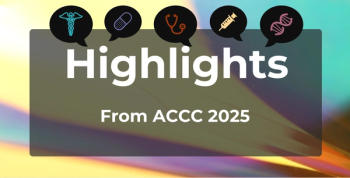
CTL019 More Cost Effective in Pediatric Patients With Acute Lymphoblastic Lymphoma
Two abstracts at the 59th Annual Meeting of the American Society of Hematology in Atlanta, Georgia found that CTL019 shows promising potential in providing significant benefit and cost effectiveness for pediatric and young adult patients with B-cell acute lymphoblastic leukemia in both the United States and the United Kingdom.
According to 2 studies presented at the 59th Annual Meeting & Exposition of the American Society of Hematology in Atlanta, Georgia, CTL019 shows promising potential in providing significant benefit and cost effectiveness for pediatric and young adult patients with B-cell acute lymphoblastic leukemia (ALL).
Studying populations in the United States and the United Kingdom, researchers assessed the efficacy of CTL019 (tisagenlecleucel), a chimeric antigen receptor (CAR) T-cell therapy, in pediatric and young adult patients with relapsed or refractory (r/r) ALL.
Currently, treatments for r/r pediatric ALL (pALL) include: clofarabine monotherapy (Clo-M), clofarabine combination therapy (Clo-C), blinatumomab (Blin), other salvage chemotherapies (SC), and allogeneic stem cell transplant (SCT). SCT is considered the only potentially curative option, according to the authors of the
“However, less than 50% of patients with multiple relapses achieve complete remission (CR) from existing treatments, and even fewer are eligible for and ultimately receive SCT,” wrote the authors.
The authors developed a partitioned survival model to assess the incremental cost effectiveness of CTL019 compared with Clo-M, Clo-C, Blin, SC, and 2nd SCT, over a 20-year period. The model included 3 health states: event-free survival (EFS), progressive disease, and death. Incremental life years (LYs), incremental quality-adjusted life years (QALYs), and incremental cost per QALY gained were estimated comparing CTL019 to each comparator.
The results showed that over a 20-year span, treatment with CTL019 provided an increase of 4.62, 3.79, 3.68, 2.08, and 2.05 in discounted LYs and an increase of 4.29, 3.64, 2.23, and 2.31 in discounted QALYs relative to Clo-M, Clo-C, Blin, SC, and SCT, respectively. Using incremental cost effectiveness ratios (WTP thresholds) from $100,000/QALY to $300,000/QALY, the value-based prices for CTL019 ranged from $488,470 to $1,364,525.
UK's National Institute for Health and Care Excellence (NICE) recently conducted a cost-effectiveness analysis that modeled the benefits of CTL019 relative to the costs using early trial data.
The authors of the
Building upon the NICE report, the authors calculated the patients’ expected productivity using nationally representative data and calculated the consumer surplus accruing to patients from the use of CTL019.
Results showed that patients gained 3294 QALYs from CTL019 relative to clofarabine, which translated to £164,690,866 of total value; £49,525,920 were attributable to added patient productivity from employment gains. Using the 3 prices considered by NICE (£250,000, £356,100, and £528,600), the consumer surplus accruing to patients was £91,847,131, £57,142,661, and £719,276, respectively. This amounts to an average of £280,799, £174,699, and £2199 of consumer surplus accruing to each patient, according to the authors.
“In our model, it produced very large numbers for the value of extended survival and improved quality of life for treating kids and young adults who, without these therapies, have a very high mortality risk,” said Julia Snider, PhD, Precision Health Economics, in an interview with The American Journal of Managed Care ®. “This has potential to treat them and allow them to grow up, get jobs and become functioning members of society.”
Newsletter
Stay ahead of policy, cost, and value—subscribe to AJMC for expert insights at the intersection of clinical care and health economics.









































